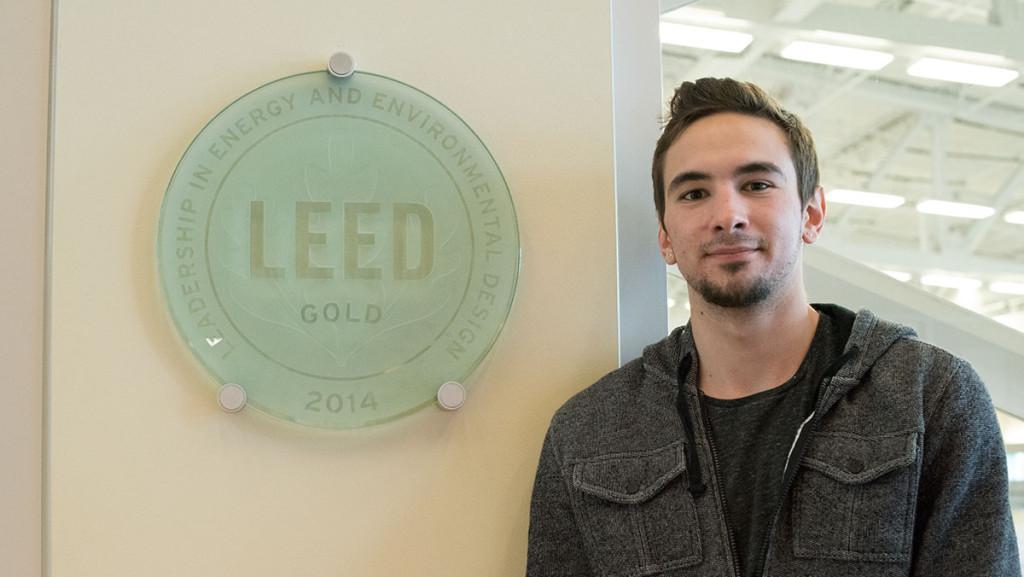Danny Polgreen, a junior architectural studies major, recently passed the Leadership in Energy and Environmental Design exam. The certification program is intended to help building owners and operators be environmentally responsible and use resources efficiently. Ithaca College has four structures with LEED certification: the Dorothy D. and Roy H. Park Center for Business and Sustainable Enterprise, the Peggy Ryan Williams Center, the Athletics and Events Center and the Classroom Link corridor in Job Hall.
The labor market for LEED professionals has already begun to experience tremendous growth, according to a study conducted by the U.S. Green Building Council. The study revealed that demand for LEED professionals grew 46 percent over a 12-month period from March 2013 to February 2014.
Staff Writer Ahana Dave sat down with Polgreen to talk about his preparation for the certification, the importance of green building and his future career aspirations.
Ahana Dave: How did you hear about the exam? How did you prepare for the exam?
Daniel Polgreen: My teacher, Lauren O’Connell, she’s one of the professors in the [art history] department, she emailed me and two other friends about a class we could take — a five-hour course that you take in preparation for the exam. Once you take that course, they pretty much help you get set up in taking the exam, so from there I just signed up for the exam.
AD: Why did you decide to take the exam?
DP: For one, it looks really good, but also if I ever wanted to become an architect, that’s one of the exams I would have to take in order to have a building LEED certified like the A&E Center or Job Hall at the college. You have to have people who are LEED certified on the project, but it’s also just a really good learning experience. I think it’s where architecture is headed.
AD: Why is it important to practice green building and be conscious of the impact building projects have on the environment?
DP: Well, actually, while studying for the exam, you learn how buildings have such an awful impact on the environment, and they use so much CO2 and all this electricity, and they use so much water. You realize that if you use energy-efficient design like capturing the stormwater, you could save so much water. If you use energy-efficient lighting, you use a lot less electricity. It has such less harmful impact on the environment, and I think that’s very important.
AD: What exactly do you plan on doing with the certification?
DP: Working on projects. Once you get LEED certified, you’re only certified for two years. Within those two years, you have to have 15 hours of either going to the classes like I did or working on the actual projects that are LEED certified. They keep track of everything just to make sure that you’re keeping up with it. I definitely want to look forward to actually designing LEED certified buildings and energy-efficient buildings.
AD: Do you think the demand for LEED certification is increasing?
DP: I think LEED is getting really big now. It’s not something that’s mandatory, but I think people want to have their buildings LEED certified just for tax reasons. And you could charge more for the buildings, but then also you save a lot of money. You spend a little more money in the beginning, but then in the long run you save so much more, and I think that’s something people are starting to realize.
AD: How does the certification fit into your career aspirations?
DP: Well, hopefully when I’m an architect, I could apply energy-efficient design into houses, or into buildings or any kind of projects I’m working on.
AD: Do you have any advice for people who are looking to take the exam?
DP: I would definitely say take it as soon as you can. Don’t rush into it because it’s not just something you want to take and get it over with. It’s something you want to take and learn from.








